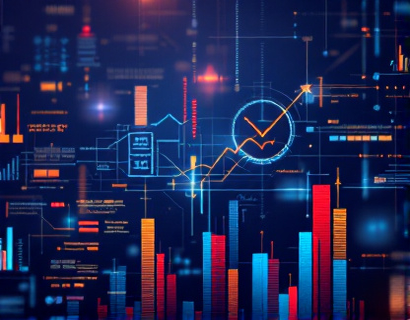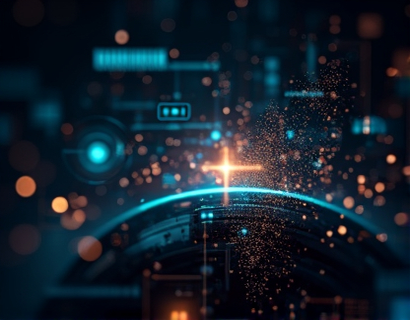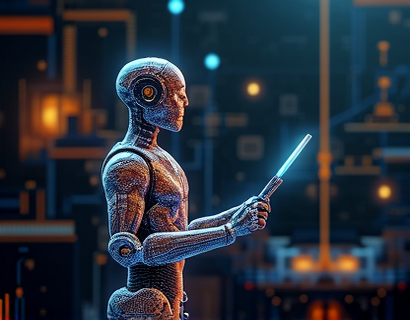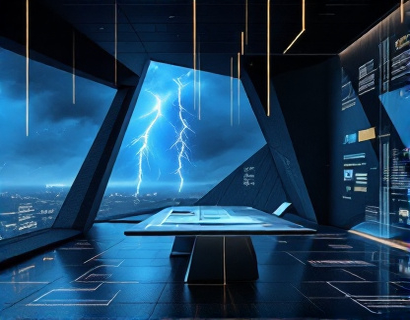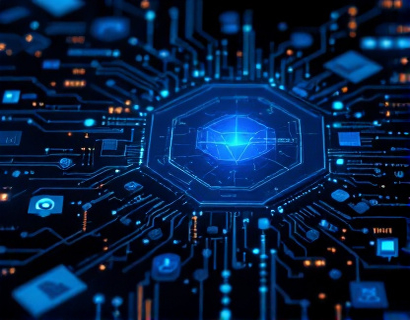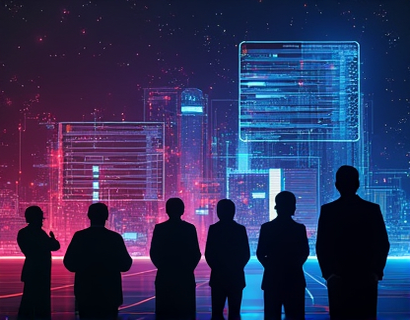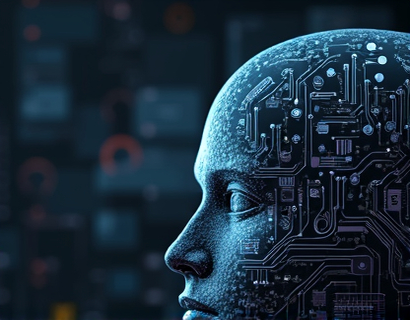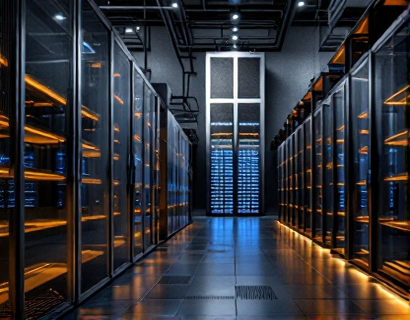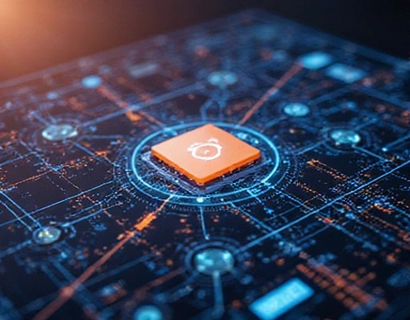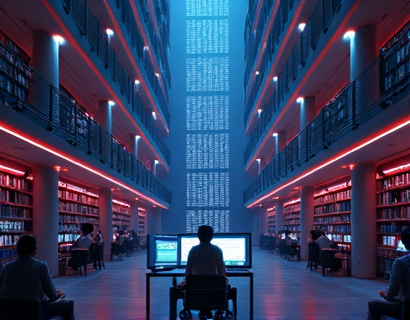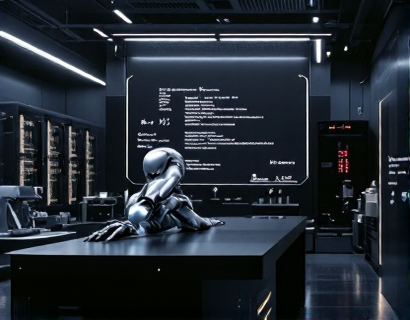Decentralized DAOs: Empowering Web3 Governance Through Community-Driven Innovation and Transparency
In the rapidly evolving landscape of Web3, decentralized autonomous organizations (DAOs) stand as a pivotal force in redefining governance and innovation. These community-driven entities leverage blockchain technology to create transparent, scalable, and inclusive systems for managing digital protocols. This comprehensive guide delves into the transformative impact of DAOs, exploring how they empower communities and drive the future of decentralized technology.
Understanding DAOs
Decentralized autonomous organizations, or DAOs, are digital entities governed by smart contracts on a blockchain. These smart contracts encode the rules and decision-making processes, ensuring that the organization operates autonomously without central authority. The core principle of a DAO is decentralization, which means that control is distributed among its members rather than concentrated in the hands of a few.
The concept of DAOs emerged from the broader blockchain and cryptocurrency movement, building on the success of early decentralized applications (dApps). Unlike traditional organizations, DAOs do not rely on hierarchical structures or intermediaries. Instead, they operate based on predefined protocols and community consensus, making them inherently more transparent and resistant to manipulation.
Community Empowerment
One of the most significant advantages of DAOs is their ability to empower communities. By allowing token holders to vote on proposals and participate in governance, DAOs democratize decision-making processes. This shift from centralized control to community-driven governance ensures that the interests of all members are considered, fostering a sense of ownership and engagement.
Token economics play a crucial role in this empowerment. Token holders not only have a stake in the DAO's success but also a direct say in its direction. This mechanism incentivizes active participation and aligns the interests of the community with the long-term health of the organization. For instance, proposals that receive majority support from token holders are executed, ensuring that the DAO evolves in line with community needs and aspirations.
Transparency and Trust
Transparency is a cornerstone of DAOs, and it is achieved through the immutable nature of blockchain technology. All transactions, proposals, and votes are recorded on the blockchain, making them accessible to anyone. This level of transparency builds trust among members and external stakeholders, as there is no room for hidden agendas or corrupt practices.
Moreover, the open-source nature of many DAOs allows for continuous scrutiny and improvement. Community members can audit the code, suggest enhancements, and contribute to the development of the organization. This collaborative approach not only enhances security but also fosters innovation, as diverse perspectives lead to more robust solutions.
Scalability and Flexibility
Scalability is a critical factor for the widespread adoption of DAOs. Traditional governance models often struggle to scale due to bureaucratic inefficiencies and slow decision-making processes. DAOs, however, are designed to scale organically through their decentralized architecture. As the community grows, so does the organization, without the need for additional layers of management.
Flexibility is another key advantage. DAOs can quickly adapt to changing circumstances by updating their smart contracts. This agility allows them to respond to new challenges and opportunities in the Web3 ecosystem, ensuring their relevance and effectiveness. For example, a DAO managing a decentralized finance (DeFi) protocol can introduce new features or modify existing ones based on community feedback and market conditions.
Case Studies and Real-World Applications
Several DAOs have successfully demonstrated the potential of this governance model. One notable example is the MakerDAO, which manages the stablecoin DAI on the Ethereum blockchain. MakerDAO's governance system allows token holders to propose and vote on changes to the protocol, ensuring that the system remains stable and resilient. This community-driven approach has been instrumental in maintaining the value of DAI and expanding the use cases of the Maker protocol.
Another example is the DAOstack, a suite of tools designed to facilitate the creation and management of DAOs. DAOstack provides a framework for building governance systems that are secure, scalable, and user-friendly. By leveraging DAOstack, new projects can quickly establish a robust governance structure, attracting more participants and fostering growth.
Challenges and Considerations
Despite their numerous benefits, DAOs face several challenges that need to be addressed for widespread adoption. One major concern is the technical complexity involved in setting up and managing a DAO. Not all communities have the expertise to develop and maintain smart contracts, which can be a barrier to entry.
Another challenge is the risk of governance attacks, such as sybil attacks, where an entity creates multiple fake identities to gain disproportionate influence. To mitigate these risks, DAOs must implement robust security measures and best practices, such as using reputable governance protocols and conducting thorough audits.
Legal and regulatory uncertainties also pose a challenge. As DAOs operate in a relatively uncharted legal space, there is a need for clearer guidelines and frameworks to ensure compliance and protect participants. Engaging with legal experts and advocating for favorable regulations can help address these concerns and promote the growth of DAOs.
Future Prospects
The future of DAOs is promising, with ongoing developments in blockchain technology and increasing community adoption. As more projects adopt DAO governance models, the ecosystem will become more interconnected and resilient. The integration of advanced features, such as liquid governance and decentralized finance (DeFi) integrations, will further enhance the capabilities of DAOs.
Moreover, the concept of interoperability between different DAOs is gaining traction. By creating bridges and protocols that allow DAOs to interact and collaborate, the Web3 ecosystem can achieve a higher level of coordination and synergy. This interconnectedness will enable more complex and sophisticated governance structures, driving innovation and expanding the potential of decentralized systems.
Conclusion
Decentralized autonomous organizations represent a revolutionary approach to governance in the Web3 era. By empowering communities, ensuring transparency, and offering scalability and flexibility, DAOs are poised to transform the way digital protocols are managed. As the technology matures and more projects adopt these models, the impact of DAOs will only grow, paving the way for a more decentralized, inclusive, and future-proof digital landscape.



